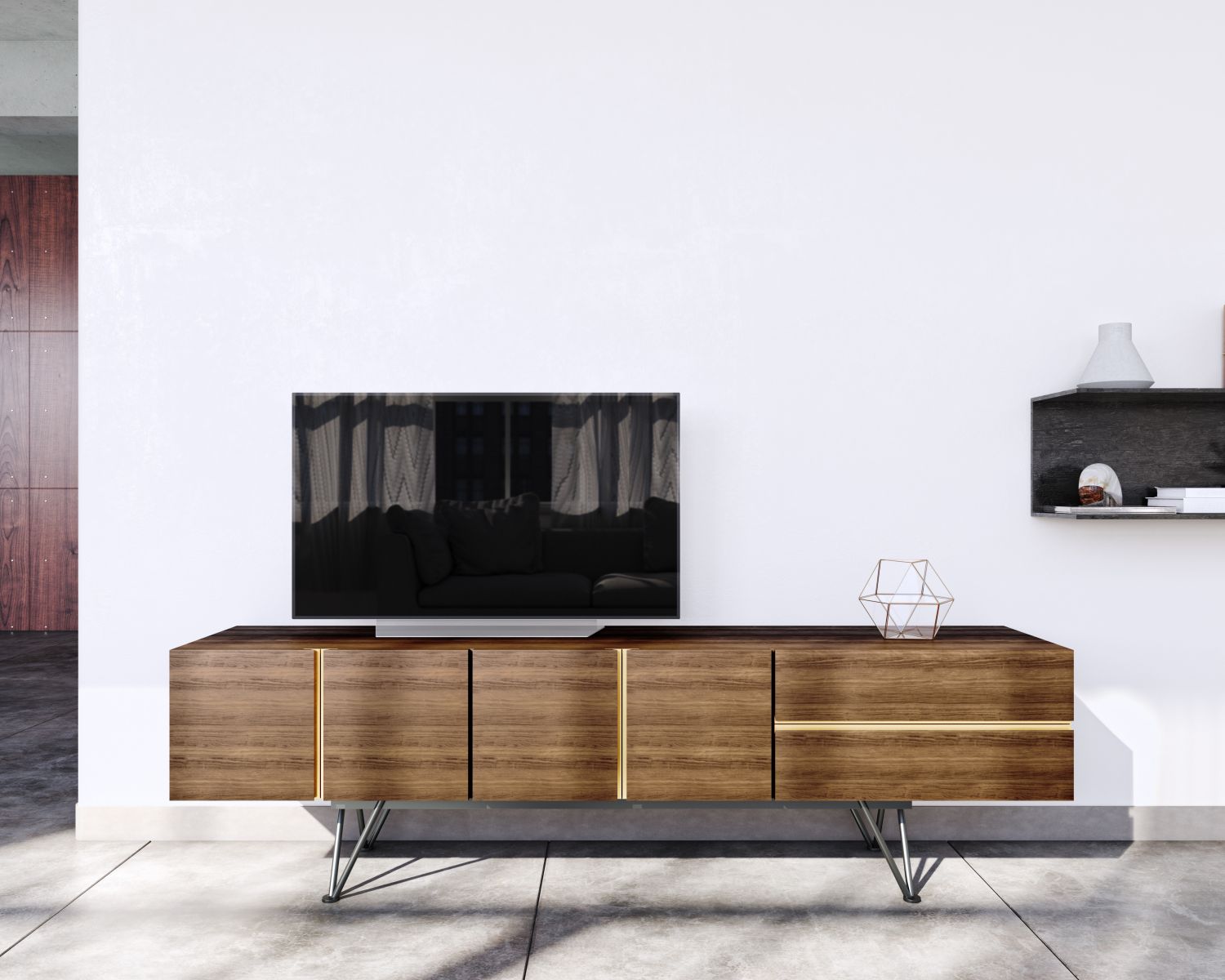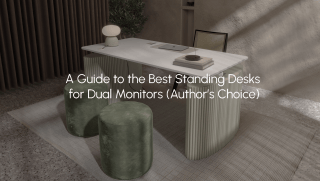When it comes to maximizing your viewing experience, the right TV stand plays a crucial role. Not only does it provide a secure and stable base for your television, but it also enhances the aesthetics of your living space. A proper TV stand ensures that your TV is positioned at the optimal height and angle, allowing you to enjoy a comfortable viewing experience without straining your neck or eyes. Moreover, a well-designed TV stand offers the convenience of organizing and concealing cables, keeping your entertainment setup neat and clutter-free.

Understanding TV Mounting Options
TV mounting options have come a long way in recent years, offering homeowners a variety of choices to suit their preferences and space constraints. One popular option is wall mounting, which involves attaching the TV directly to the wall. This not only saves space but also creates a sleek and modern look. Another option is using a TV stand, which provides a freestanding base for your TV. TV stands come in various sizes, styles, and materials, allowing you to find one that complements your decor and meets your functional needs.
Can You Put a Bigger TV on A Smaller Stand?
Many homeowners wonder if it is possible to mount a larger TV on a smaller stand. While it may seem tempting to use an existing stand that you already own, it is essential to consider the compatibility between your TV and stand. Mounting a larger TV on a smaller stand can pose several risks and drawbacks. Firstly, the smaller stand may not be able to support the weight of the larger TV, leading to instability and potential damage. Secondly, a larger TV may not fit properly on a smaller stand, resulting in an unbalanced and precarious setup. Lastly, mounting a larger TV on a smaller stand can compromise the overall aesthetics of your entertainment area, as the TV may appear disproportionately large or overwhelm the stand.
Factors to Consider When Determining TV Size and Stand Compatibility
To ensure a seamless and safe mounting experience, it is crucial to consider several factors when determining TV size and stand compatibility. The first factor to consider is the weight capacity of the stand. Every TV stand is designed to support a specific weight range, so it is essential to check the manufacturer's specifications and ensure that your TV falls within the recommended weight limit. Additionally, you must consider the VESA (Video Electronics Standards Association) compatibility of your TV and stand. VESA is a standard that ensures the mounting holes on your TV and stand are aligned, allowing for a secure and stable connection. Lastly, consider the dimensions of both your TV and stand. The width and depth of your TV should align with the dimensions of the stand, ensuring a proper fit and preventing any overhang or instability.
Potential Risks and Drawbacks of Mounting A Larger TV on A Smaller Stand
While it may be tempting to mount a larger TV on a smaller stand due to space limitations or convenience, it is essential to be aware of the potential risks and drawbacks involved. Firstly, a smaller stand may not provide the necessary stability and support for a larger TV, leading to an increased risk of accidents and damage. The weight distribution may be compromised, causing the TV to tilt or even topple over. Secondly, mounting a larger TV on a smaller stand can impact the viewing experience. The stand may obstruct the screen or interfere with the optimal viewing angle, resulting in a subpar visual experience. Lastly, the aesthetics of your entertainment area may be compromised. A larger TV on a smaller stand may create an unbalanced and disproportionate look, detracting from the overall appeal of your living space.
Alternatives to Consider if Your TV and Stand Are Not Compatible
If you find that your TV and stand are not compatible, there are several alternatives to consider. The first option is to invest in a new TV stand that is specifically designed to accommodate larger TVs. This ensures both stability and aesthetics, as the stand will be able to support the weight of your TV while providing a visually pleasing setup. Another option is to explore wall mounting. Wall mounting eliminates the need for a stand altogether and allows you to position your TV at the optimal height and angle. It also creates a clean and modern look, as the TV appears to be floating on the wall. However, it is essential to ensure that your wall is capable of supporting the weight of your TV and that you follow proper installation guidelines to avoid any damage.

Tips for Choosing the Right TV Stand for Your TV Size
Choosing the right TV stand for your TV size can be a daunting task, but with a few helpful tips, you can make an informed decision. Firstly, consider the weight capacity of the stand. Ensure that it can support the weight of your TV by checking the manufacturer's specifications. Secondly, measure the dimensions of your TV and compare them to the stand's dimensions. This will help you determine if the TV and stand are compatible in terms of size and fit. Additionally, consider the style and design of the stand. Look for a stand that complements your decor and enhances the overall aesthetics of your living space. Lastly, prioritize functionality. Choose a stand that offers ample storage for your media devices and accessories, allowing you to keep your entertainment area organized and tidy.
Benefits of Mounting Your TV on A Compatible Stand
Mounting your TV on a compatible stand offers numerous benefits that contribute to an enhanced viewing experience. Firstly, a compatible stand ensures stability and safety. You can have peace of mind knowing that your TV is securely mounted, minimizing the risk of accidents or damage. Secondly, mounting your TV at the proper height and angle improves your viewing comfort. You can enjoy your favorite shows and movies without straining your neck or eyes, resulting in a more enjoyable and immersive experience. Additionally, a compatible stand allows you to optimize the aesthetics of your living space. The TV and stand will complement each other, creating a visually appealing setup that enhances the overall ambiance of your home.
DIY vs Professional TV Installation: Which Option is the Best?
When it comes to TV installation, you have the option to either do it yourself (DIY) or hire a professional. Each option has its pros and cons, and the choice ultimately depends on your technical skills, time availability, and budget. DIY installation can be a cost-effective solution, as it eliminates the need to hire a professional. It also gives you the flexibility to customize the installation according to your preferences. However, DIY installation requires technical knowledge and can be time-consuming. It is essential to follow installation guidelines carefully to avoid any damage or safety hazards. On the other hand, hiring a professional ensures a hassle-free and expert installation. Professionals have the necessary tools and expertise to mount your TV securely and correctly. They can also provide valuable advice on the best placement and setup for optimal viewing. However, professional installation comes at a cost and may require scheduling an appointment.
Conclusion: Finding the Perfect Balance between TV Size and Stand Compatibility
In conclusion, maximizing your viewing experience requires finding the perfect balance between TV size and stand compatibility. While it may be tempting to mount a larger TV on a smaller stand, it is essential to consider the potential risks and drawbacks involved. Factors such as weight capacity, VESA compatibility, and dimensions should be taken into account when determining TV size and stand compatibility. If your TV and stand are not compatible, there are alternatives to consider, such as investing in a new TV stand or exploring wall mounting. By choosing the right TV stand for your TV size and mounting it properly, you can enjoy a safe, comfortable, and visually pleasing viewing experience. Whether you decide to tackle the installation yourself or hire a professional, the key is to prioritize stability, aesthetics, and functionality. With the right setup, you can transform your living space into a cinematic haven.
Written by individual contributors and
curated by Rove Concepts Team





















































































